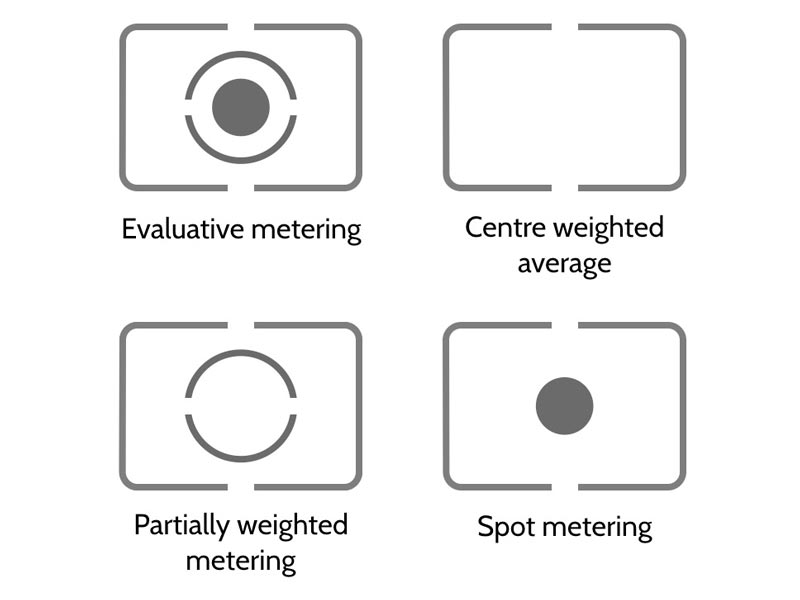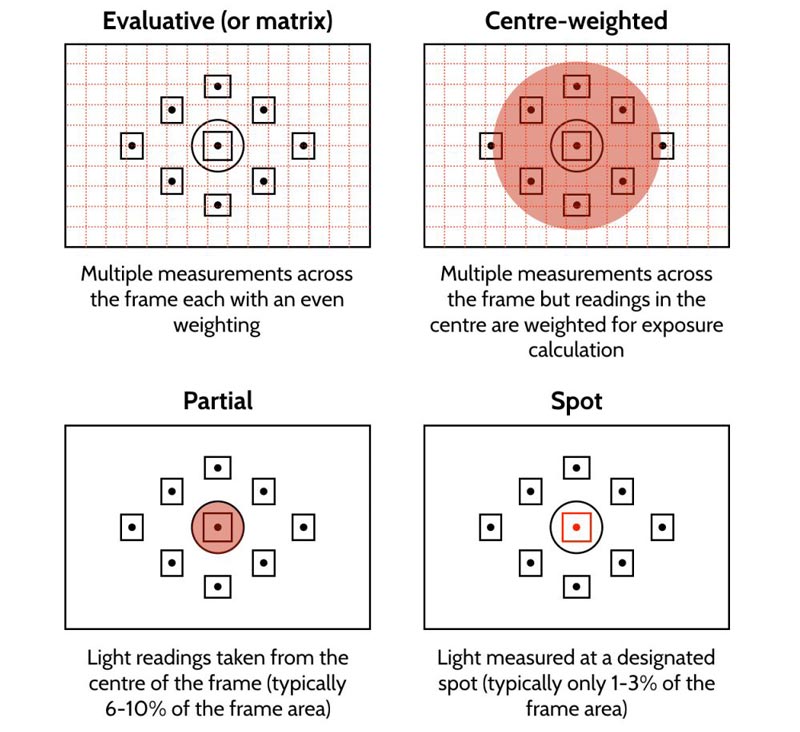There can be up to four metering settings in DSLRs: Evaluative, Centre-Weighted, Partial, and Spot. Below are the four diagrams that represent each one on your camera (Canon symbols, but other makers are similar).

Evaluative is the camera’s default mode. Here, the camera takes light readings from points throughout the frame which it then averages out to result in one final light reading from which it calculates exposure. This mode is best used when light intensity is evenly distributed through the scene.
Spot metering, on the other hand, takes one light readings from a designated spot in the frame. This ensures that the subject is correctly exposed but possibly at the expense of other areas in the frame. In the photograph below, we don’t care about the clipped background lighting—the most important thing is to make sure that the subject is correctly exposed. Below shows the four metering settings and how they utilise the light across the scenes to calculate exposure.
For here for the more technical article on metering.
